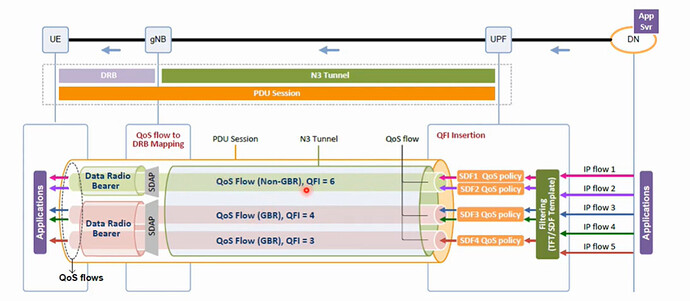No, QFI (QoS Flow Identifier) in 5G is not equivalent to QCI (QoS Class Identifier) in 4G.
QCI (QoS Class Identifier): In 4G LTE (Long-Term Evolution) networks, QCI is used to define different classes of bearer services. Each QCI represents a specific quality of service level with different packet forwarding treatment. The QCI value is carried in the GTP (GPRS Tunneling Protocol) headers and helps the network prioritize traffic and allocate resources accordingly. QCI values range from 1 to 9, with 1 being the highest priority (e.g., for real-time services like voice) and 9 being the lowest priority (e.g., for best-effort services like web browsing).
QFI (QoS Flow Identifier): In 5G networks, QFI is used to identify different QoS Flows within a PDU Session (Packet Data Unit Session). It is used to distinguish between different data streams or flows within the same PDU Session. The QFI value is carried in the 5QI (5G QoS Indicator) field of the PDU Session Establishment Request message and is used to apply specific QoS rules to individual data flows within the session. QFI values range from 1 to 65,535, and their interpretation is specific to the PDU Session’s QoS rules and the policies set by the 5G network operator.
Both QCI in 4G and QFI in 5G are related to Quality of Service (QoS) management, they serve different purposes and have different roles in their respective network generations. QCI is used for defining classes of bearer services, whereas QFI is used to identify individual QoS Flows within a PDU Session in 5G.
You can refer to my YouTube cahnnel for a tutorial on QoS in 5G: ![]() https://www.youtube.com/watch?v=zERfUZ5UQ8Y
https://www.youtube.com/watch?v=zERfUZ5UQ8Y
